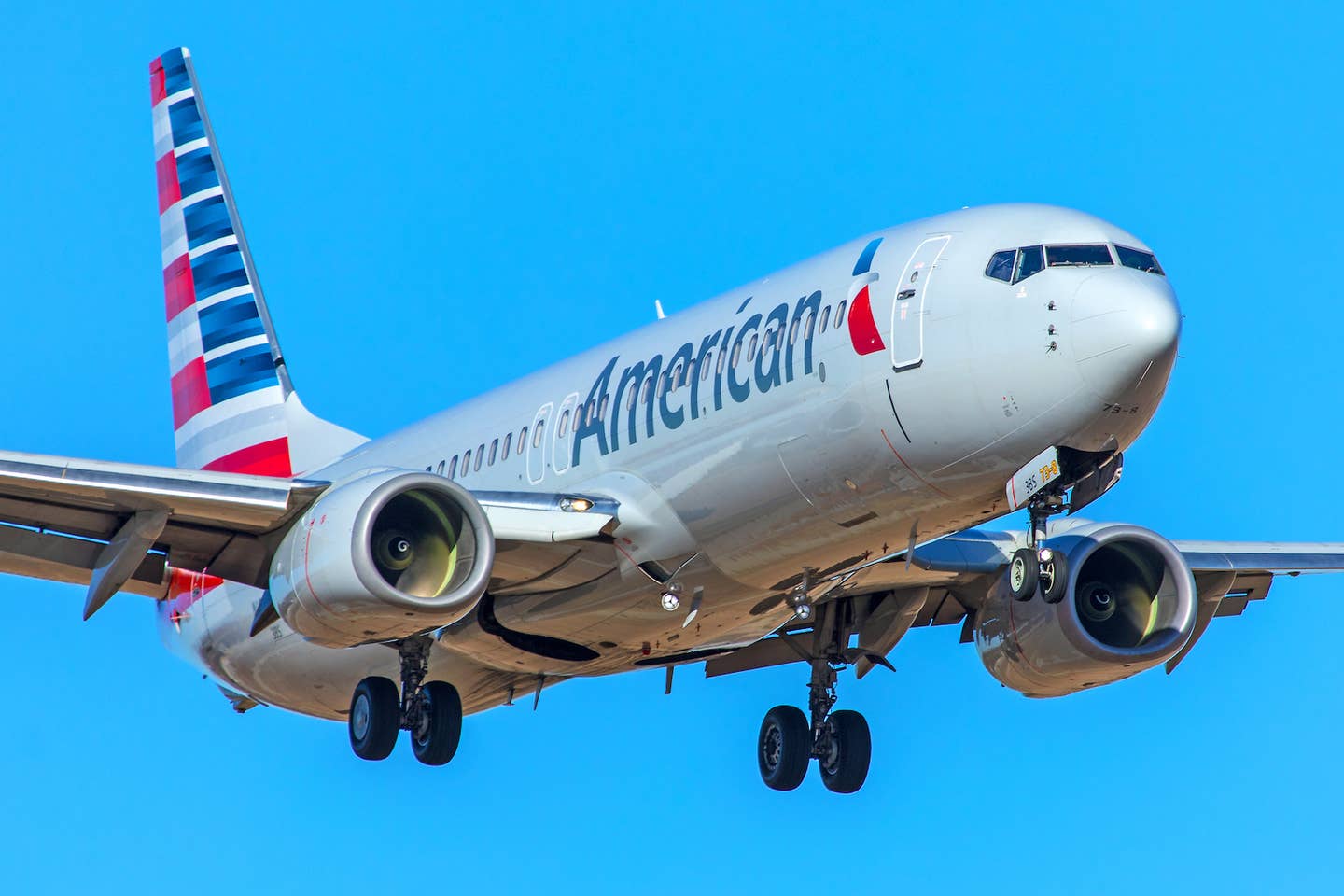Faulty Brake Install Blamed for Boeing 737 Overrun
The NTSB published its preliminary findings into a February runway overrun incident involving an American 737.

An American 737-800 landing at DFW Airport (Photo: AirlineGeeks | William Derrickson)
Issues involving a brake replacement project are being blamed for a February overrun incident, according to a preliminary National Transportation Safety Board (NTSB) report. On February 10, 2024, American flight 1632, a Boeing 737-800 flying from Washington Reagan National Airport (KDCA) to Dallas/Fort Worth International Airport (KDFW), experienced a “brake system anomaly” during landing.
The 15-year-old aircraft—registered as N991AN—initially landed safely on runway 17L but came to a stop beyond the threshold area. There were no injuries reported among the 104 passengers and crew onboard.
“The safety of our customers and team members is our top priority and we are fully cooperating with the National Transportation Safety Board in its investigation of American Airlines flight 1632,” a spokesperson from the airline said in a statement.
Initial findings indicate that the aircraft touched down at a normal ground speed of 150 knots before departing the end of the runway at 30 knots. The agency’s preliminary report highlights potential problems with recent maintenance performed on the aircraft’s brakes.
The airline had just completed a project replacing the airplane’s steel brakes with carbon brakes four days earlier on Feb. 6, 2024. During this maintenance project, the NTSB believes that hydraulic lines connected to the brakes may have been incorrectly reattached.
According to Flightradar24 tracking data, N991AN had been at the airline’s Tulsa, Oklahoma, maintenance facility from February 1 to February 7. After returning to revenue service, the aircraft completed 17 flights between February 7 and February 10. The aircraft returned to revenue service again over a week later on February 19 following the incident.
During the landing phase, the automatic braking system malfunctioned shortly after touchdown, forcing the pilots to rely on manual braking and thrust reversers to slow the aircraft. Despite their efforts, the aircraft continued at a higher speed than expected as it neared the end of the runway.
The captain—who had initially been the pilot monitoring—then deployed maximum reverse thrust and notified air traffic control. “American 1632, total brake failure, we are departing the end of runway 17L, roll crash fire rescue,” the captain told the tower in a radio transmission.
The aircraft eventually came to a stop past the 8,500-foot runway’s end but within the paved overrun area. The NTSB says its investigation into the incident is ongoing.
Editor’s Note: This article first appeared on AirlineGeeks.com.

Sign-up for newsletters & special offers!
Get the latest FLYING stories & special offers delivered directly to your inbox






